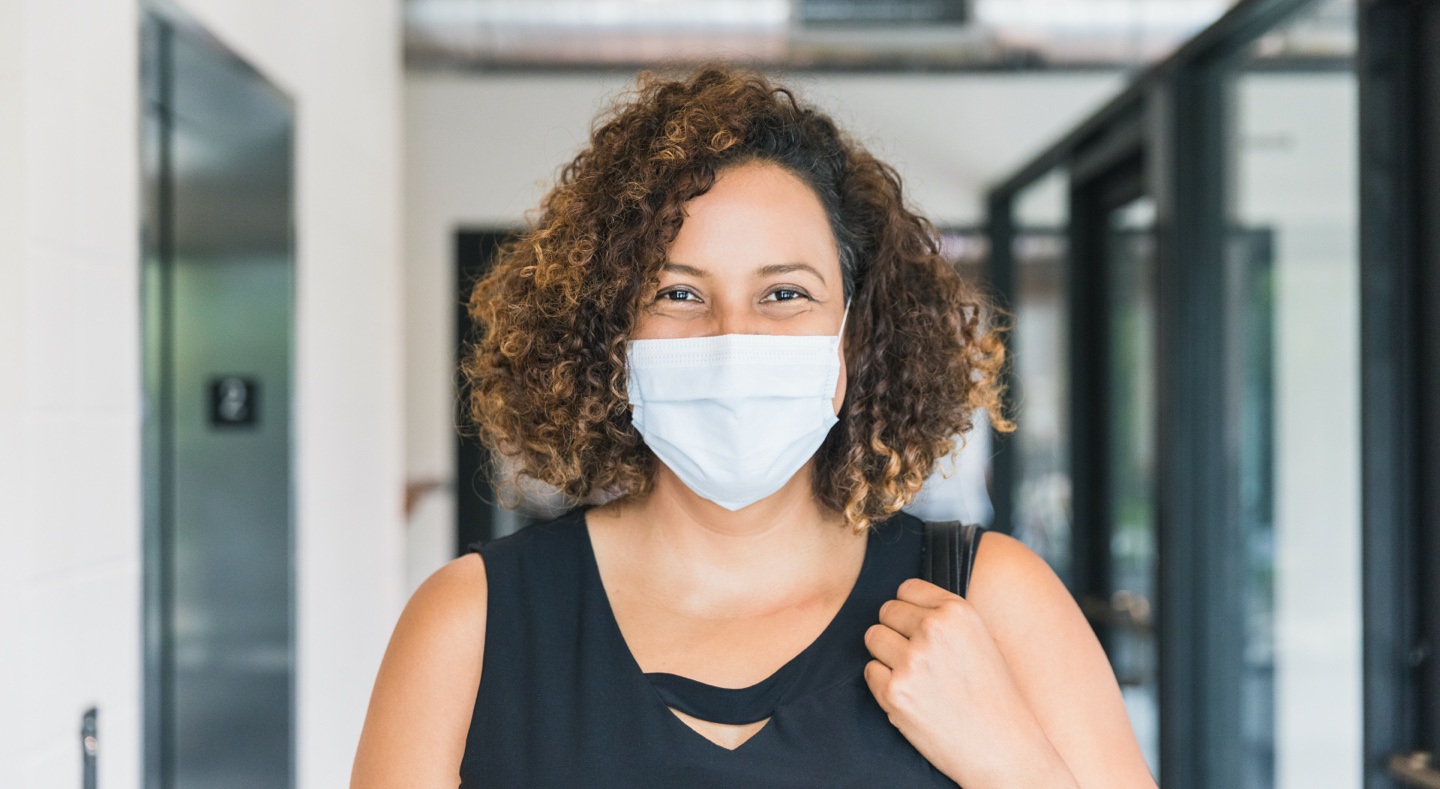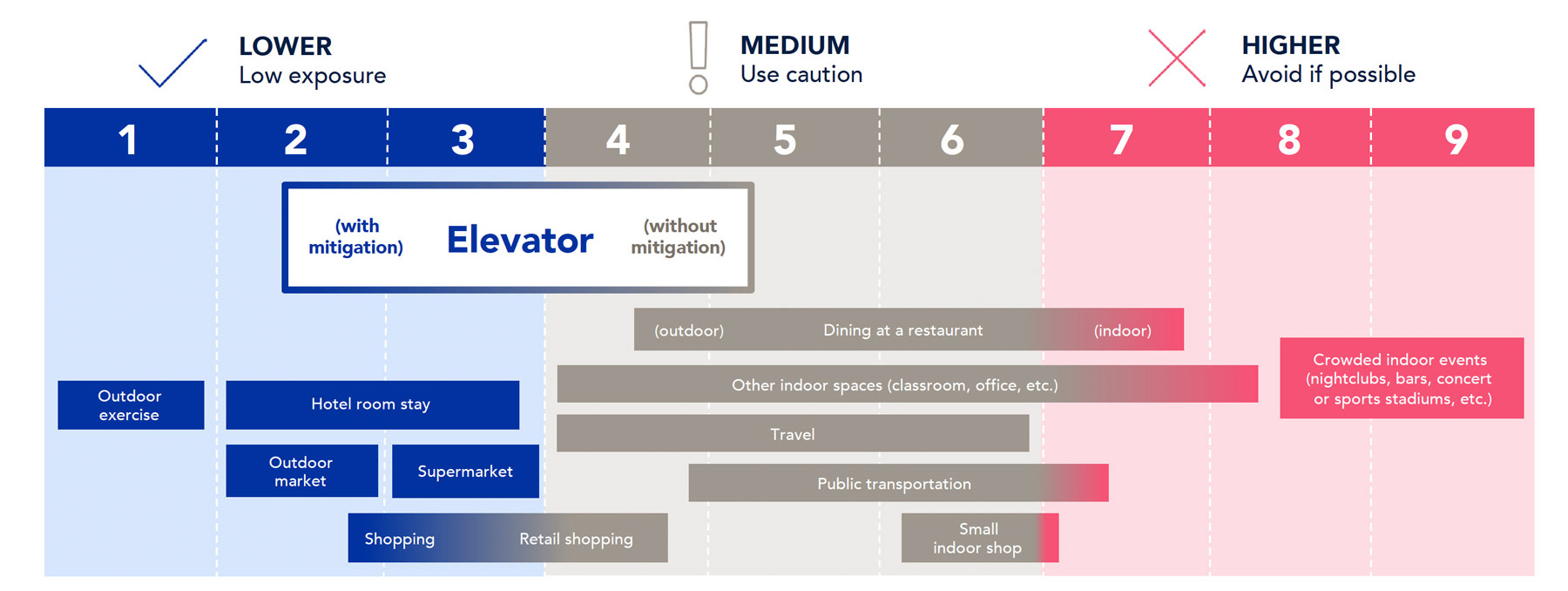Luồng khí Covid-19 thang máy | luồng không khí | Otis Việt Nam

Airflow and COVID-19 in Elevators
Should you avoid elevators right now?
As people continue to return to public spaces like offices, campuses and transportation hubs, this question remains top of mind. And, with the help of leading scientific experts, we’re here to provide some answers.
Otis partnered with airflow experts from Purdue University to investigate the risk of exposure to COVID-19 in elevators, and how science-based findings show we can mitigate exposure risk for our passengers. The study results have been featured in broadcast media and published in Building and Environment
in November 2021.
Elevator rides are relatively low risk for COVID-19 exposure
The study findings show that exposure risk on a short elevator ride, when coupled with mitigation including the proper use of masks, is lower compared with many everyday activities — due to ventilation and the air that is naturally exchanged during the ride.
Elevators have a higher level of air exchange, lowering the exposure levels
Average elevator ride poses less exposure risk than a one-hour bus ride or day in office
Proper mask usage by all riders** reduces exposure risk by 50%
Purification solutions* reduce exposure by an additional 20 to 30%
Proper mask usage by all riders combined with air purification* can reduce exposure risk 60 to 65%
*Needlepoint bipolar ionization (NPBI) as compared with no air purification device
**Proper mask usage compared with no masks. Assumes proper mask wearing of typical surgical-style mask per WHO and CDC guidelines
How does an elevator ride
measure up?
To get a better sense of the exposure risk of an elevator ride, it’s helpful to look at how it compares with some other common activities.
Qualitative comparisons place riding in an elevator with mitigation in a lower-exposure category

Qualitative comparisons place riding in an elevator with mitigation in a lower-exposure category
Variation of intensity, frequency and duration of exposure contributes to different relative risk even within each activity category
Adapted from relative framework originally proposed by Julie Marcus at Harvard and Eleanor Murray at Boston University.
Elevator risk can be lowered by applying proper mask usage, air purification (like NPBI), physical distancing, etc.

The Science of Elevator Airflow
Over three months, study experts used state-of-the-art modeling to simulate airflow and various elevator scenarios. Through the study’s data, we can provide science-based answers and guidance around COVID-19 exposure risks while riding in an elevator.
Executive Summary
Get a high-level look at the goals and key findings of our elevator airflow study.
Airflow and Elevators White Paper
Take an in-depth dive into the full study background, methodology and findings.
Air Purification in Elevators Today
The study indicated that air purification technologies can help reduce exposure risk to COVID-19. Explore our technical brief for a closer look at elevator airflow and purification options.

Elevators are an essential part of everyday life for many, often the first leg in your journey and the last on your route home. We know many passengers have questions about exposure risks associated with riding an elevator, and we want to provide answers verified by science.
-Robin Fiala, Vice President, Otis Marketing & Sales
Always on the move
Research like the airflow study is one example of our ongoing commitment to sharing information and providing science-based answers to provide greater assurance when you're on the move.
Stay connected with us for updates and the latest news, or watch Otis President & CEO Judy Marks comment about the study results on CNBC's Mad Money
.

